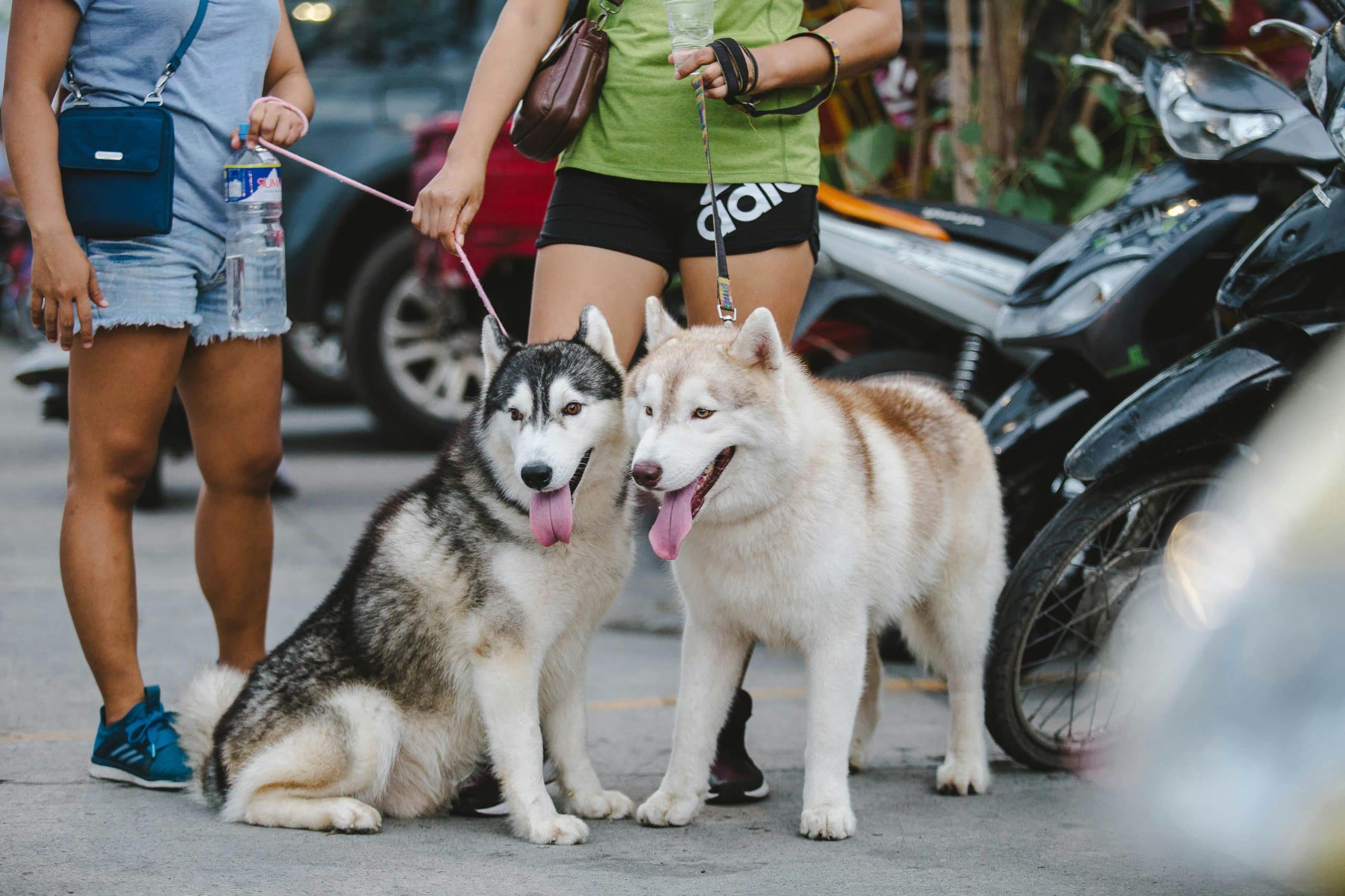What Are the Key Elements of a Raw Food Diet for Siberian Huskies?

As loving Siberian Husky owners, you are likely aware of the unique dietary requirements of this majestic breed. Lively, hardy, and bred for extreme conditions, these dogs need a diet that matches their high energy and resilience. Many Husky owners have turned to a raw food diet, believing it to provide the best nutrition for their four-legged friends. However, plunging into this dietary regime without proper knowledge can potentially be harmful. This article will delve deep into the key elements of a raw food diet for Siberian Huskies, shedding light on the essential nutrients, appropriate feeding guidelines, and potential benefits and risks involved.
Understanding the Raw Food Diet
Before discussing the key elements of a raw food diet for Siberian Huskies, it is crucial to understand what exactly this diet entails. Often referred to as Biologically Appropriate Raw Food (BARF) or species-appropriate diet, it includes feeding your dog raw meat, bones, fruits, and vegetables instead of commercial dog food.
A lire également : How to Create an Effective Noise Desensitization Schedule for Noise-Averse Dogs?
Proponents of the raw food diet argue that it echoes the natural, ancestral diet of wolves, and hence is better suited to fulfill our dogs’ nutritional needs. It is believed to promote healthier coats, cleaner teeth, and higher energy levels. However, it requires careful planning and a deep understanding of your Husky’s nutritional needs to avoid potential nutritional imbalances or deficiencies.
Essential Nutrients for Siberian Huskies
Just as with humans, Siberian Huskies require a balanced diet packed with essential nutrients to thrive. The key elements should include adequate protein, fat, carbohydrates, vitamins, and minerals.
A découvrir également : How Can You Tell if Your Tortoise Is Getting the Right Amount of UV Light?
Raw meat is the primary source of protein in a BARF diet. Suitable options include chicken, beef, lamb, turkey, and fish. It aids in building muscles and tissues, and is absolutely vital for your Huskies’ growth and energy.
Fats are another important nutrient, providing concentrated energy and helping in absorption of fat-soluble vitamins. Sources can include fish, beef, and chicken fats.
While dogs, including Siberian Huskies, do not need a large amount of carbohydrates, they can provide useful fiber and energy. Suitable sources might include sweet potatoes, brown rice, or oats.
Vitamins and minerals are crucial for a robust immune system, bone health, and overall well-being. They can be supplied through a variety of fruits and vegetables, like spinach, carrots, apples, and blueberries.
Appropriate Feeding Guidelines
Embracing a raw food diet for your Siberian Husky is not just about providing the right foods, but also about feeding them in the correct manner. Siberian Huskies are known for their efficient metabolism, meaning they require less food compared to other breeds of their size.
A general guideline is that adult Huskies should consume about 2-3% of their body weight daily, divided into two meals. For puppies, this percentage should be higher, at about 5-10%.
However, these are approximations and actual feeding amounts should be adjusted based on your dog’s age, weight, activity level, and overall health. Monitoring your dog’s weight and body condition, and adjusting their food intake accordingly, is essential to avoid obesity or malnutrition.
Potential Benefits and Risks
As with any diet, a raw food diet for Siberian Huskies comes with potential benefits and risks. Benefits often cited include shinier coats, healthier skin, cleaner teeth, higher energy levels, and smaller stools.
However, potential risks cannot be overlooked. These include the risk of nutritional imbalances or deficiencies, risk of choking or breaking teeth on bones, and risk of bacterial contamination from raw meat.
Therefore, it is of utmost importance to educate yourselves about these potential risks and take preventative measures. This may include sourcing your raw foods from reliable suppliers, maintaining proper hygiene during food preparation, and regularly consulting with a vet or a pet nutritionist.
Navigating the Debate
As you embark on the raw food diet journey with your Siberian Huskies, you are likely to encounter varying opinions. Some vets and pet nutritionists are wary of a raw food diet, citing potential health risks. On the other hand, many Siberian Husky owners swear by the benefits they have observed in their dogs.
The key is to approach this diet with an open mind and a willingness to learn. Adapt and tweak the diet based on your Siberian Husky’s individual needs and reactions. More importantly, do not hesitate to seek professional advice when in doubt. Remember, a well-balanced, nutrient-rich diet is the foundation of your Siberian Husky’s health and happiness.
Potential Drawbacks of the Commercial Dog Food
In contrast to the raw food diet, commercial dog food is often criticized for its lack of nutritional value and unnecessary additives. Many of these food products are processed and contain fillers like corn, wheat, and soy, which offer little to no nutritional value for your Siberian Huskies. Additionally, artificial flavors and preservatives common in these foods can contribute to health issues such as allergies, obesity, and digestive problems.
While it’s true that some high-quality commercial dog foods have been specifically formulated to provide a balanced diet, not all products on the market meet this standard. Furthermore, even with the best commercial foods, feeding your Siberian Husky the same meal every day can lead to a lack of variety in their diet, which could potentially result in nutritional deficiencies over time.
On the flip side, commercial dog food does have its advantages. It’s convenient, readily available, and requires no preparation time. Plus, it’s generally complete and balanced — meaning it has been formulated to meet the nutritional standards established by the Association of American Feed Control Officials (AAFCO).
It’s important to note that not all commercial dog foods are created equal, so if you decide to feed your Siberian Husky a commercial diet, be sure to choose a high-quality product. Look for foods that list a named meat (like chicken, beef, or lamb) as the first ingredient rather than a grain or meat by-product.
Making the Final Decision: Raw Food Diet or Commercial Dog Food?
The decision to feed your Siberian Husky a raw food diet or commercial dog food is a personal one, as both have their pros and cons. The key is to make an informed decision that takes into account your dog’s specific needs, your lifestyle, and your budget.
If you decide to choose the raw food diet, be prepared for the extra time and effort it requires. This diet needs careful planning and preparation to ensure it’s balanced and nutritionally complete. It’s also necessary to take extra precautions when handling raw meat to prevent bacterial contamination.
On the other hand, if you choose commercial dog food, do your research to find a high-quality product that meets your Siberian Husky’s nutritional needs. Remember that not all commercial foods are created equal, and price is not always an indicator of quality.
Ultimately, the best diet for your Siberian Husky is the one that keeps them healthy, happy, and active. It’s essential to monitor your dog’s health regularly and adjust their diet as necessary. And, as always, don’t hesitate to consult with a vet or pet nutritionist if you have any concerns or questions about your Siberian Husky’s diet.
Remember, the goal is not to choose between a raw food diet and commercial dog food aggressively but to find the most nutritious, balanced, and suitable diet for your Siberian Husky. After all, a healthy diet is the foundation of your dog’s overall well-being. And as loving Siberian Husky owners, that’s all we really want for our four-legged friends.
